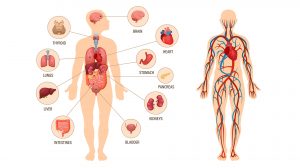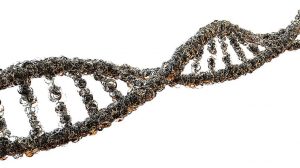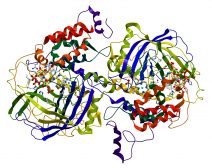Growth and Development of a Human Baby

An artistic depiction of a human embryo
Table of Contents
Continued from the initial human reproduction of the previous page in this tutorial.
Upon arrival in the uterus, the zygote fuses itself to the uterine wall. At this point, cells of the zygote differentiate into two distinct types
- Embryoblast Cells – These cells continually divide into what will become the embryo, the baby itself
- Trophoblast Cells – These cells form the placenta, that form against the uterine wall
The Placenta
The placenta is the life support machine of the developing embryo, providing oxygen and food for it and removing toxic material and CO2 from the developing embryo. The umbilical cord, a connection to the mothers’ bloodstream is responsible for this.
The Embryo
By the end of the third week, this placenta provides a rich source of nutrients for the unborn baby that now is roughly the size of this letter o….
Towards the end of the first month, the heart starts to form while designated cells begin to form the basic structure of the limbs, spine, nervous and circulatory systems. After the initial formation of these major bodily areas, less essential characteristics begin to develop such as the eyes, ears, and nose.
By the tenth week of pregnancy, these facial characteristics become recognizable, and the overall silhouette of the embryo now resembles that of a human.
By the fourteenth week, all the major characteristics of the embryo have more or less developed, and possesses all the requirements of a fully functional being.
From this time onwards, the embryo will continue to grow in size rather in complexity via cell division. Forty weeks later, nine months since fertilization, the embryo, now in the fetal stage is mature enough to enter the world.
The next tutorial goes through the stages of birth, where the mother’s body has to adapt to the harsh conditions of birth…
You will also like...

The Human Physiology
Physiology is the study of how living organisms function. Thus, human physiology deals specifically with the physiologic..

Respiration
The human respiratory system is an efficient system of inspiring and expiring respiratory gases. This tutorial provides ..

Still Freshwater & Plants
Plants in lentic habitats have features not found in terrestrial plants. They acquired these features as they adapt to t..

Water in Plants
The movement of molecules (specifically, water and solutes) is vital to the understanding of plant processes. This tuto..

Genetic Mutations
This tutorial looks at the mutation at the gene level and the harm it may bring. Learn about single nucleotide polymorph..

Protein Activity and Cellular Metabolism
Proteins have a crucial role in various biological activities. Get to know how proteins are able to perform as enzymes, ..
